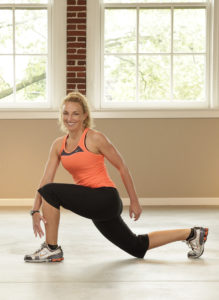Is Single-Leg Training Better for Athletes?
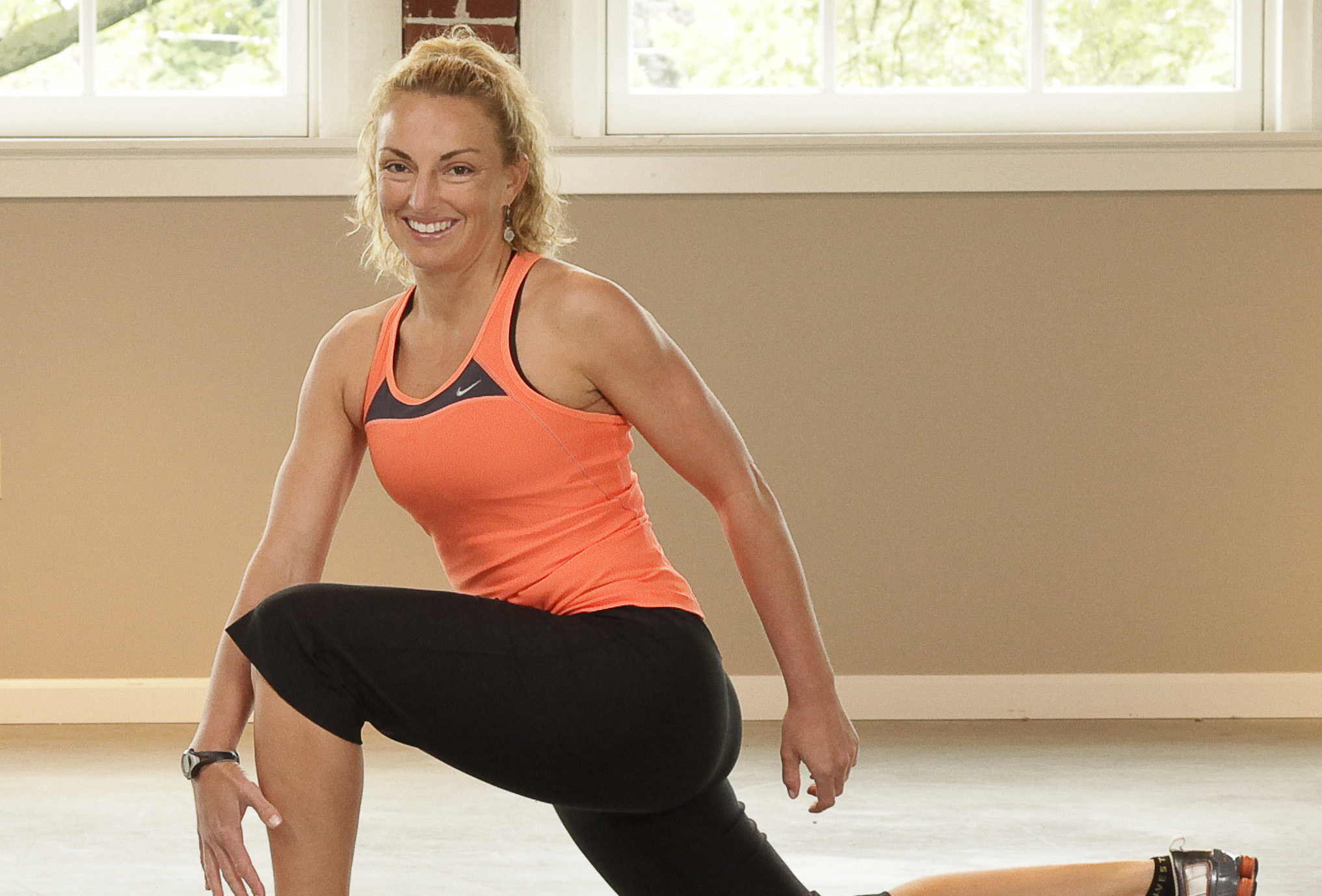
Strength and Conditioning coaches argue whether Single-leg Training is superior for athletes compared to Double-Leg Training. During sports that involve running and cycling, you are typically driving with one leg at a time, so sport specificity training would indicate that single-leg strength training would be superior. It would then make sense then to incorporate various forms of lunges and step ups in comparison to squats, presses and deadlifts.
A recent article How to Up Your Trail-Running Game | Outside Online provided a summary of the debate and cited multiple research studies with the general conclusion that both approaches seem to work. It appears that the most important thing you can do as an athlete is to just make sure you do some form of strength training and/or incorporate both approaches to improve your overall performance.
Effective Single-Leg Exercises
Basic Lunge – also referred to as a split squat
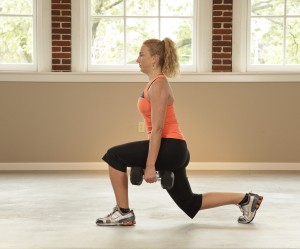
Start with one leg positioned in front of the other leg. Keep the front knee over top of the ankle or forefoot. Keep the back knee underneath or slightly behind your hips. Slowly lower the back knee towards the ground keeping the front knee over top the ankle/foot the entire time. Only lower as low as you feel comfortable. Keep your body weight leaning forward in a hip hinge and positioned over the front leg – this is your working leg. Maintain a long spine with proper posture and keep your abdominals contracted.
Adjust your range of motion as the strength of your muscles and joints allow. If just getting started, only lunge down a few inches. As you get stronger, you can lunge deeper towards the ground.
Hold hand weights to increase the load and intensity of this exercise.
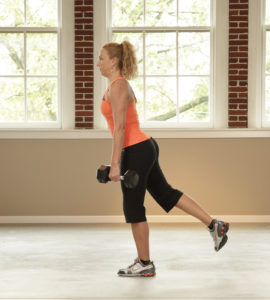 Forward/Walking Lunge
Forward/Walking Lunge
Start with your feet together and standing tall. Lunge forward with one leg, keeping the front knee over top of the ankle or forefoot. Keep the back knee underneath or slightly behind your hips. Slowly lower the back knee towards the ground keeping the front knee over top the ankle/foot the entire time. Only lower as low as you feel comfortable. Keep your body weight leaning forward in a hip hinge and positioned over the front leg – this is your working leg. Maintain a long spine with proper posture and keep your abdominals contracted. Slowly push forward, lift the back foot off the ground by utilizing your hip muscles of the front leg, come all the way back to a standing position and swing the leg through to another lunge forward on the opposite leg.
Lunge with Rotation
Complete walking lunges as noted above but add a torso rotation towards the front leg with each lunge. The rotation adds a greater glute activation.
Lunge and Reach
Complete walking lunges as noted above but add a reach forwards and towards the ground with each lunge. The reach forward adds a greater glute activation.
Side Lunge
Start with your feet together and standing tall. Lunge to the right (sideways/lateral), keeping the right knee over top of the ankle or forefoot and the left knee extended and slightly bent. Keep your knee and foot stacked and pointed in the same direction. Only lower as low as you feel comfortable. Keep your body weight leaning forward in a hip hinge and positioned over the lunging leg – this is your working leg. Maintain a long spine with proper posture and keep your abdominals contracted. Return to the starting position.
Include a torso rotation towards the lunging leg to increase glute activation
Include a reach down and forward and/or lateral to increase glute activation
Step Up
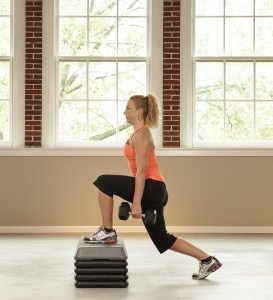 Holding a set of hand weights, position yourself in front of a bench with one foot on the bench. The bench should be at a height that puts your knee at a 90 degree angle. Keep your kneecap facing forward and your weight distributed on all four corners of your foot. Now slowly step up extending the supporting knee into a fully upright, balanced position. Now slowly lower yourself down to the starting position. Use a shorter bench or step if this bothers your knees at all.
Holding a set of hand weights, position yourself in front of a bench with one foot on the bench. The bench should be at a height that puts your knee at a 90 degree angle. Keep your kneecap facing forward and your weight distributed on all four corners of your foot. Now slowly step up extending the supporting knee into a fully upright, balanced position. Now slowly lower yourself down to the starting position. Use a shorter bench or step if this bothers your knees at all.
Stability Ball Single Leg Hamstring Curls
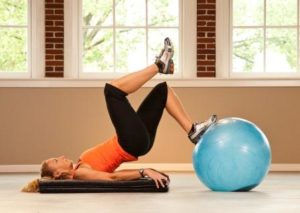
Lay on your back with one foot positioned on top of an exercise ball. With your arms at your side, slowly lift your hips and buttocks up towards the ceiling while contracting your glutes (buttocks) and hamstrings (back of thigh) until your body weight is resting comfortably on your shoulder blades. Throughout the entire exercise, be sure to keep your hips square to the ceiling and your abdominals contracted. Now slowly curl the ball in towards your body while maintaining control and stability through your core area. If this is too challenging, perform the exercise using both legs and as your strength develops, transition to single legs.
Perform strength movements 2-3 times per week. Complete 1-3 sets of 8-15 reps of various movements within your strength program.
Yours in health & fitness,
Sherri McMillan

